United Kingdom CV Tips & Format Requirements
Applying for a job in the United Kingdom? This guide has the tips, examples, & format requirements needed to write the perfect UK CV. Create your VisualCV today!
UK CV Requirements
Applying for a position in the United Kingdom requires a specific CV format. When you are looking for work in the UK, make sure that your CV is suitable for a UK audience and will meet the expectation of recruiters.
Browse our gallery of resume examples here.
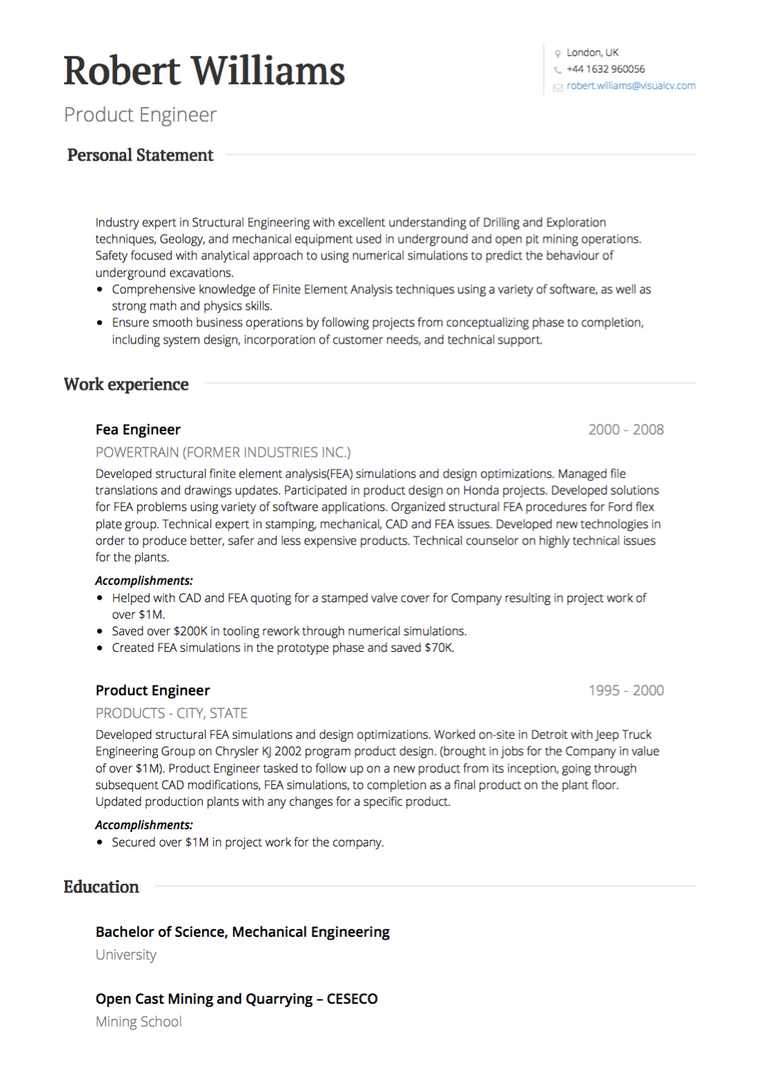
How to Format a UK CV?
To best format the CV, you need to select the best layout based on your relevant past experience and the type of role you are applying for.
There are three general CV layouts in UK that are popular:
- Reverse chronological CV format
- Combination CV format
- Functional CV format
Reverse Chronological CV Format for UK
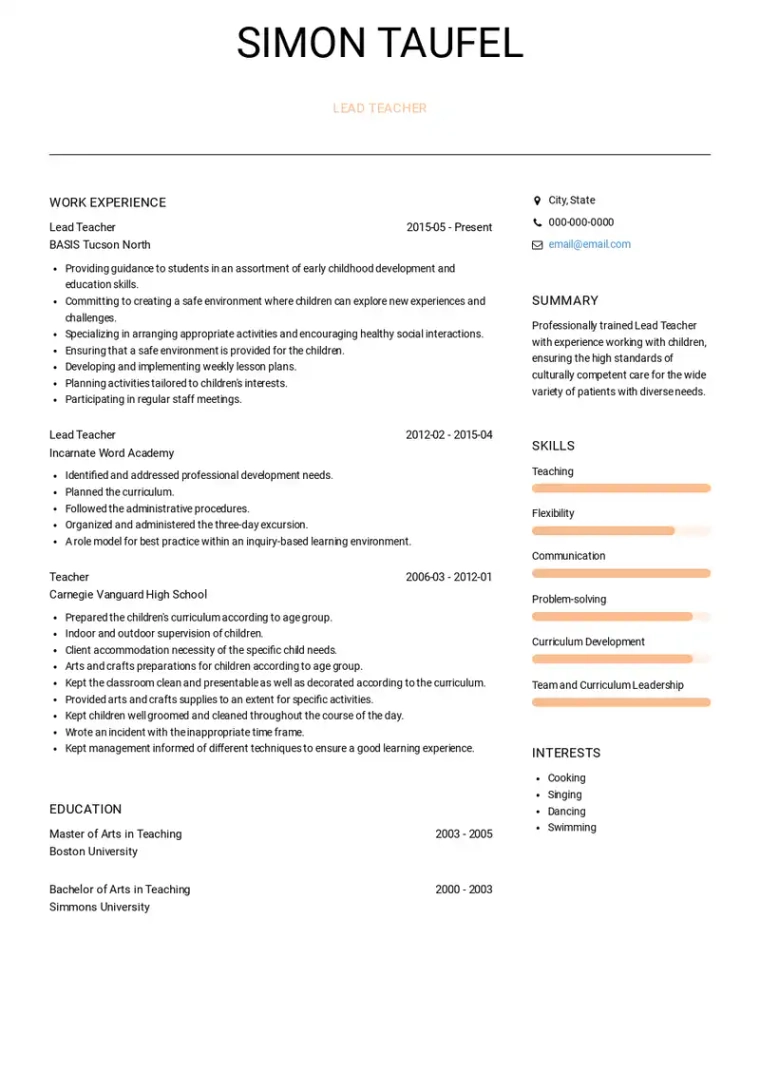
Functional CV Format for UK
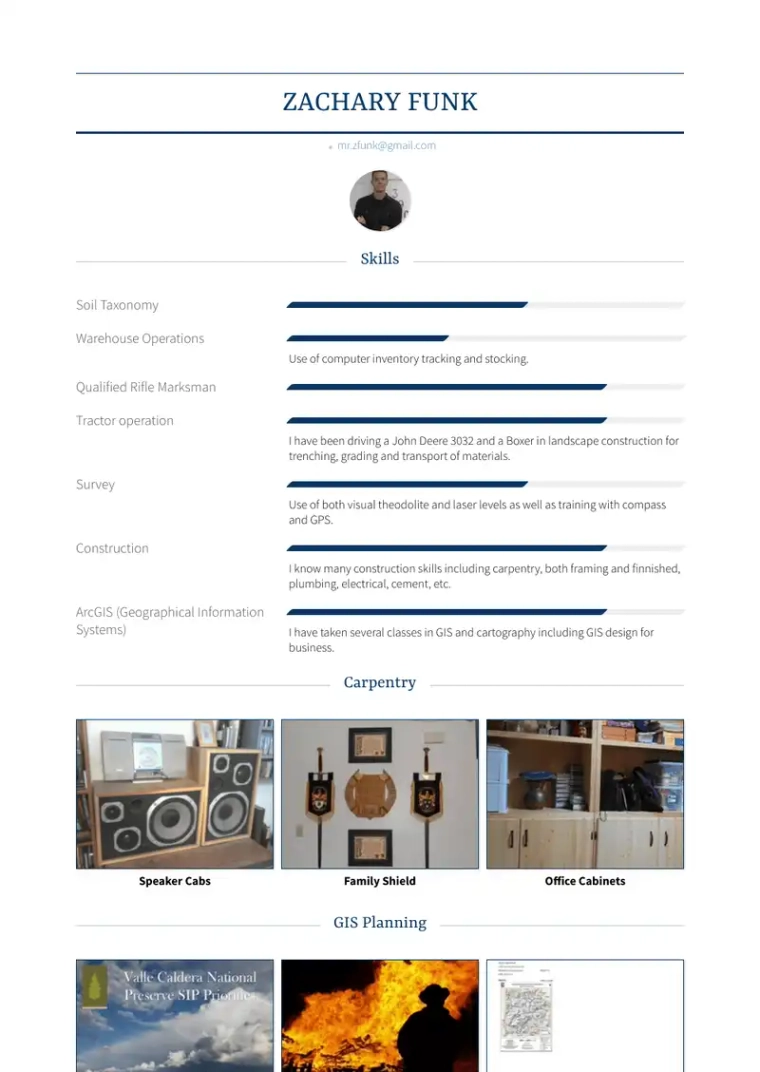
Combination CV Format for UK
A combination CV format is helpful if you are applying for a job in the UK where you wish to display with clarity how your past skills and experience are transferable to the job you are applying for.
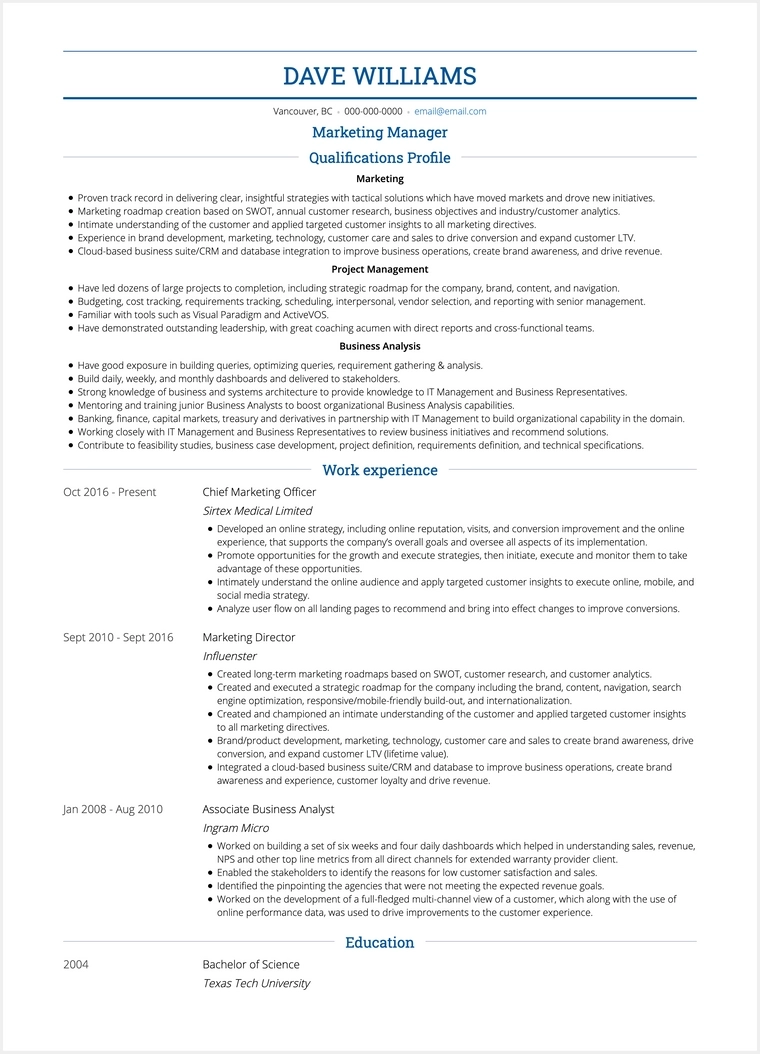
UK CV Examples
Administration UK CV Example
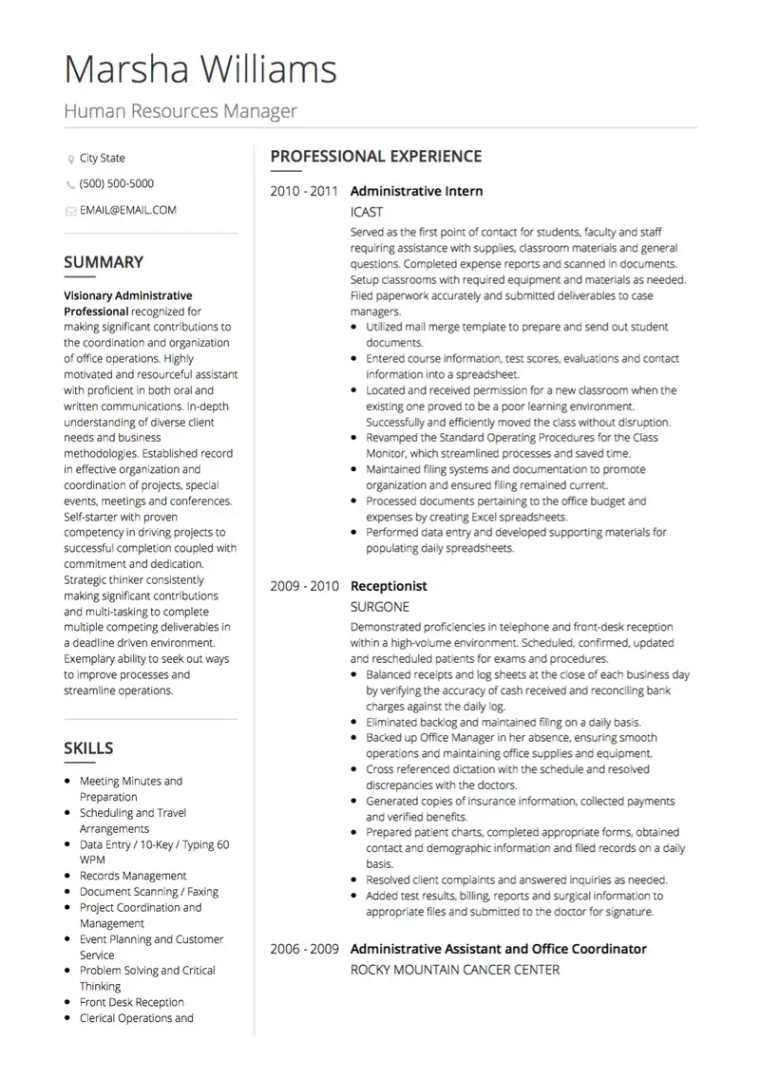
Retail UK CV Example
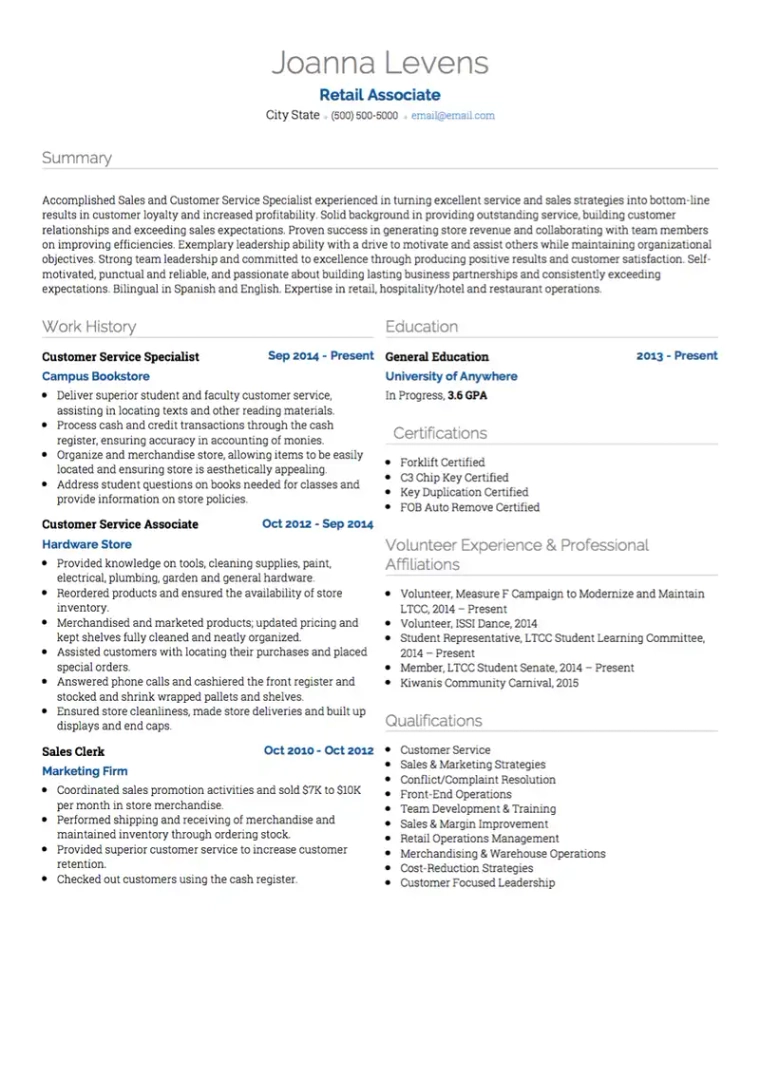
Professional British CV Example
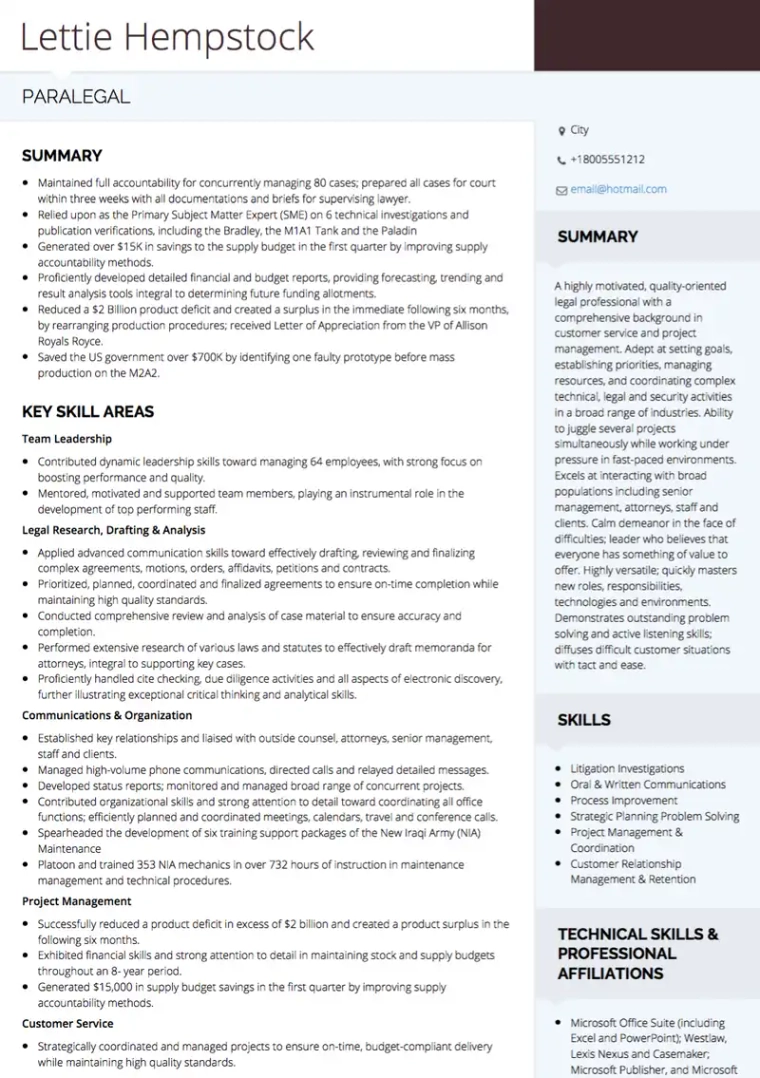
Engineer UK CV Example
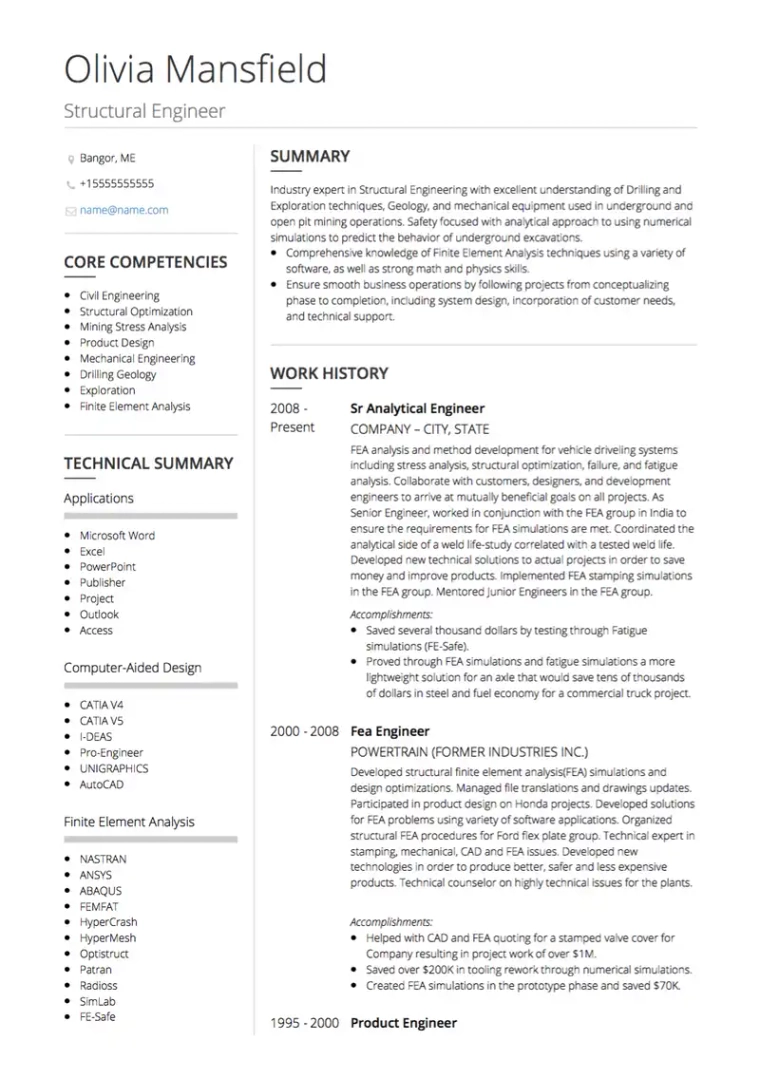
Marketing UK CV Example
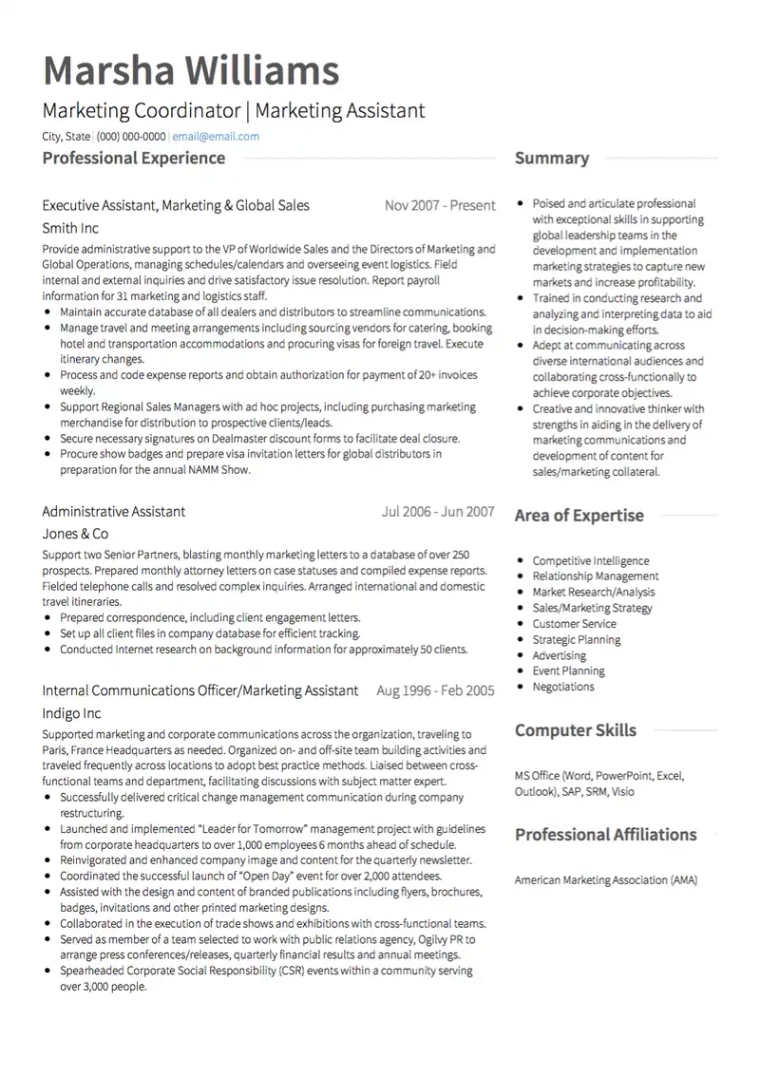
Management UK CV Example
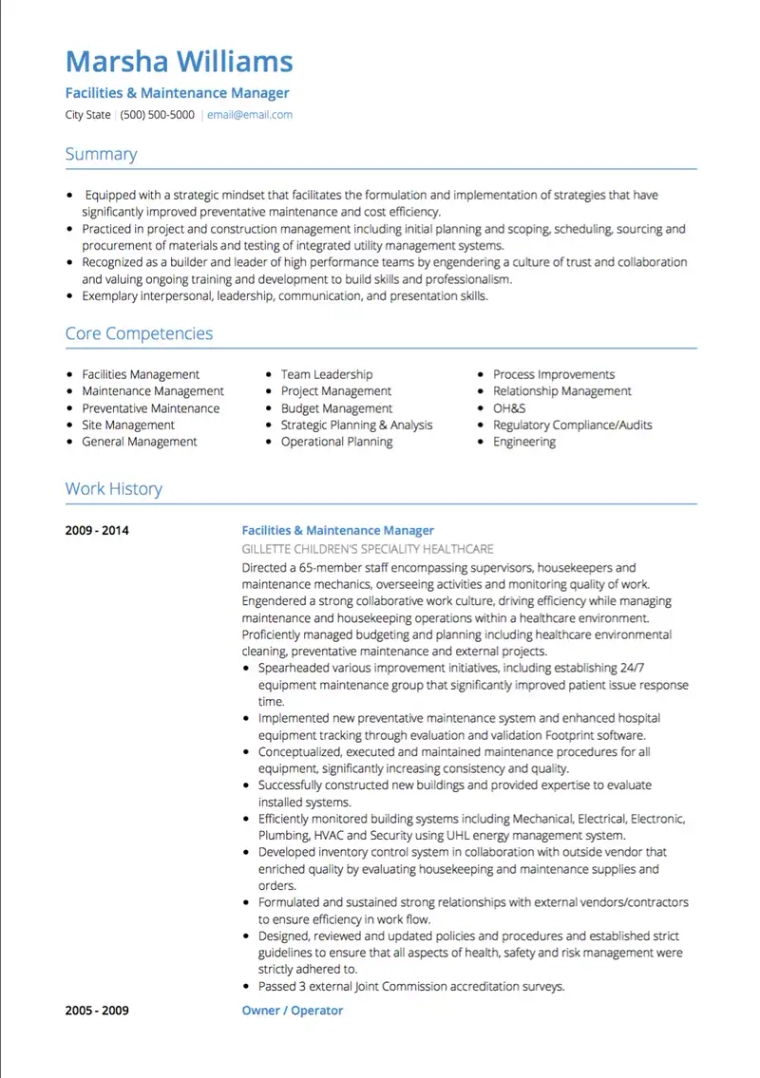
Accounting UK CV Example
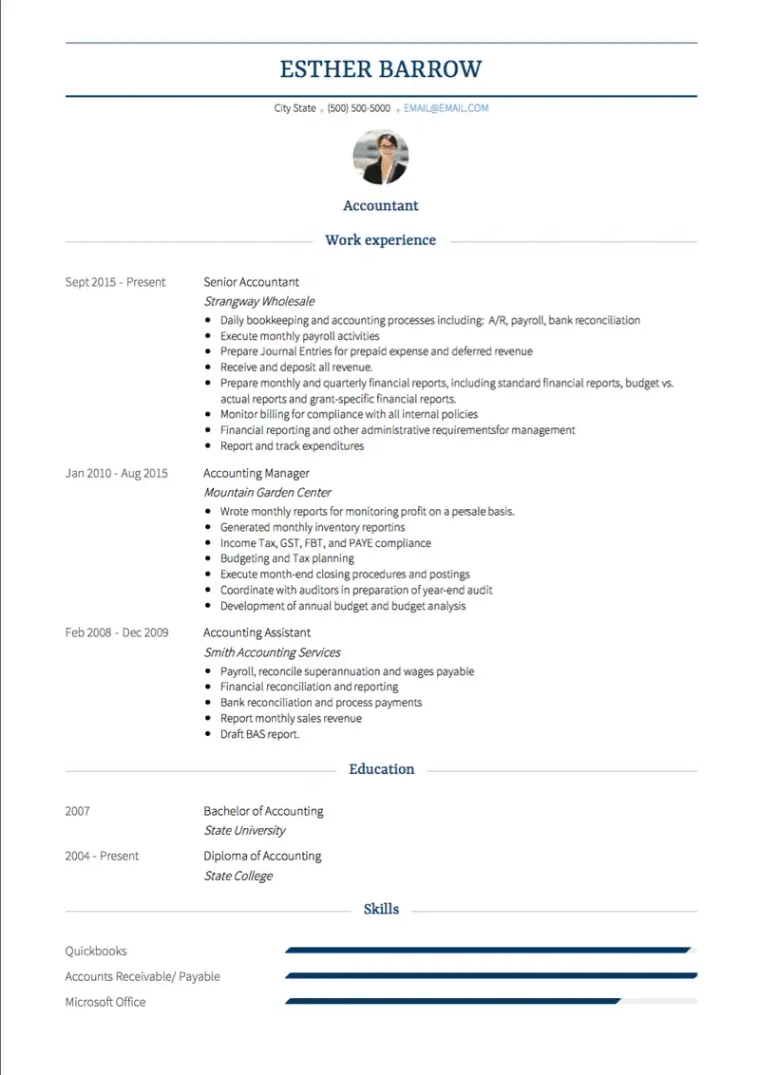
UK CV Tips and rules:
CV, not Resume: The term ‘CV’ is most common in the United Kingdom. The terms ‘resume’ and ‘curriculum vitae’ are rarely used.
Language: Be sure to write your CV in proper British English - for example, write ‘labour’ rather than ‘labor’ and ‘optimise’ rather than ‘optimize’.
Length: Your UK CV should not exceed two pages - “no longer than two sides of A4”, according to Rachel Swain at Prospects.ac.uk.
Resume template: Browse through our gallery of UK resume templates.
UK CV Format, Order and Layout:
Photo: A photo is not expected on your UK CV. While common in the rest of Europe, it is rare to see a picture on a CV in the United Kingdom. In certain roles, such as some sales positions or a creative job where visual presentation is key, a picture may be acceptable, but be sure to research the company first.
Personal Information: The only personal information required for a UK CV is your contact information - your name, home address, mobile phone number and email address (which should be some variation of your name: firstname.lastname@example.com or something similar). No other personal information should be included.
Personal Statement: Your CV should begin with a brief description, no more than five lines of text, that describes who you are, what you can do, and what you bring to the position you are applying to. Your personal statement should be tailored to the job description - focus on the skills and experience that make you suited for this particular job. Personal statements are not mandatory, but they are a great way to grab an employer’s attention. According to Michael Cheary at reed.co.uk, “a well written personal statement can mean the difference between standing out from the crowd and your application being rejected.”
Work experience: Display your previous jobs in reverse chronological order, beginning with the most recent. Use this space to showcase your achievements in each position - important milestones and quantifiable data are more impressive than daily duties. Use proactive action words to make your experience sound interesting and dynamic.
Education: Education should also be listed from most recent to least recent. Include all relevant certifications, including institution names and dates. Your education section should come after your work experience, unless you graduated very recently.
Ensuring Accurate Contact Details and Final Review of Your CV in 2025
Begin your CV with accurate contact details, such as your telephone number and email address, to ensure employers can easily reach you. Review your CV carefully to ensure it reflects your skills, professional qualifications, and relevant experience. Double-check for errors, tailor the document to the role, and format it for readability to pass ATS and attract the recruiter's attention.
Showcasing Educational Achievements and History in Your 2025 UK CV
Your education history is essential in creating a strong CV. List your educational achievements in reverse chronological order, starting with the most recent qualifications like degrees or A Levels. Mention any professional qualifications or certifications relevant to the role. Highlight coursework or academic projects that reflect key skills and relevant experience, especially if you're a recent graduate. Add examples of extra-curricular activities to demonstrate skills applicable to the workplace.
Other sections for your UK CV:
Skills: It is common to include a simple list of skills kept separate from your work history. This provides a quick, at-a-glance look at what you excel at, without delving into your experience too much.
Volunteer experience: Volunteering experience should be noted on your CV. If you prefer, you can include volunteer experience in your Work History section, but remember to specify when a role is a volunteer position.
Languages: Feel free to note any languages you are fluent in. This is particularly important when the job calls for multiple languages.
References: It is not necessary to include references in your CV. Instead, follow up with references to an employer separately when asked.
Professional Qualifications
Highlight any certifications, training programs, or professional courses you have completed. This demonstrates your commitment to professional growth and aligns with applicant tracking systems. Examples include industry-specific qualifications, licenses, or short courses that add value to your application.
Key Skills
List your core competencies and strengths in this section. Use bullet points to emphasize skills such as transferable skills, relevant information, and job-specific abilities. Tailor this section to the job description to capture the recruiter's attention effectively.
Work Placements
Include details of internships, apprenticeships, or work placements relevant to the job. This section is especially valuable for recent graduates, showcasing practical experience and relevant achievements that align with the role.
Extracurricular Activities
Detail activities outside work that contribute to your personal and professional development. Focus on activities that demonstrate transferable skills or are relevant to the job, such as volunteering, leadership roles, or team projects.
References
Mention that references are available upon request. This indicates readiness to provide endorsements, which is essential for building trust with potential employers.
Additional Tips
-
Structure your CV in reverse chronological order to align with UK CV standards.
-
Include accurate contact details, such as your telephone number, to ensure easy communication.
-
Use bullet points for clarity and ensure each section is concise and focused on the recruiter's needs.
-
Tailor your CV to highlight relevant experience and provide evidence of your skills and achievements.
-
Double-check your CV for any errors and format it for readability to pass applicant tracking systems.
Highlighting Extra-Curricular Activities and Transferable Skills for UK Jobs in 2025
Include extra-curricular activities that illustrate transferable skills like teamwork, leadership, and communication. These activities, such as volunteering or university societies, should align with the role and demonstrate qualities that are relevant to the job. Use bullet points to clearly explain how these activities have helped you build skills applicable in the workplace, offering a complete picture of your capabilities.
How do I Write a UK CV in 2024?
To write a UK CV in 2024 follow these steps:
- First, select the right UK CV format based on your experience level. A reverse chronological CV format is good for experienced professionals, and a functional UK CV format is perfect for most entry level professionals.
- Second, right the perfect CV header.
- Third, write your UK CV summary or objective.
- Fourth, describe your work experience on your CV.
- Lastly, list any skills or achievements you’ve in a CV skills or an accomplishments section.
What is a UK CV Format?
The UK CV format requires your CV to be:
- A maximum of two pages long.
- In an A4 format.
- Either be a reverse chronological or a functional CV.
How do I Write a Good UK CV?
To write a good UK CV ensure that you start with the right CV format and then customize the CV based on the job you are applying for. Pick up keywords and skills that are mentioned in the job description and modify your UK CV to show relevant skills and experience.
What Font Should a CV be in the UK?
The following fonts are preferred for a UK CV - Roboto, Arial, Calibri or Times New Roman. To give your UK CV a modern look you can select a Sans serif font e.g. Roboto, and for traditional looking CVs you can go for a Serif type font e.g. Times New Roman.
2025 UK CV Trends
In 2024, UK CV trends emphasize adaptability and precision to align with job market demands.
- Functional CVs are increasingly popular, particularly for showcasing skills over employment history, which is ideal for career changers or those with gaps in their work history.
- Combination CVs blend skills and experience, favored for their ability to highlight how past roles prepare candidates for future positions.
- Brevity and Structure: A two-page limit ensures CVs are concise and scannable, making key qualifications quickly visible to recruiters.
- Personal Profiles: Strong introductory statements or profiles are crucial, offering a tailored summary of skills and experiences relevant to the job.
- Simple Design: Clear, well-organized CV layouts help ensure information is easy to read and professionally presented.
Using a Skills-Based CV Format in 2025 for UK Job Applications
For applicants looking to highlight their transferable skills over a traditional employment history, a skills-based CV is an effective approach. This format is especially suitable for career changers or recent graduates. Organize this section by grouping key skills under clear section headings, such as "Leadership" or "Communication." Use bullet points to provide examples of real-world applications, tailoring the content to include relevant information for the role.
Optimizing Your CV for Applicant Tracking Systems (ATS) in 2025
Crafting a CV compatible with applicant tracking systems is crucial in today’s recruitment process. Use industry-specific keywords, such as key skills, professional qualifications, and relevant experience, throughout your CV. Structure the document with clear section headings and format it using bullet points for clarity. Include accurate contact details like your telephone number, and ensure the formatting passes ATS filters seamlessly.
Writing a Tailored Cover Letter to Complement Your 2025 CV
A compelling cover letter expands on your recent achievements and showcases why you're the right person for the job. Use it to emphasize key skills, explain your relevant experience, and address any gaps in your employment history. Ensure the letter complements your CV, aligns with the recruitment process, and reflects the specific requirements of the role.
How Many Pages a UK CV Should Be?
Your CV should be one page if you are either an entry-level or a mid-career professional with less than 15 years of experience. For those who have more than 15 years of experience, a CV can be more than one page.
What Font Size Should my CV be in the UK?
A font size between 10 to 12 is considered easy to read. So make sure that your UK CV’s font size isn’t less than 10, but not greater than 12 either.
Conclusion:
Though CVs in English-speaking countries are very similar, each country has its own nuances that must be observed for best results. When writing a UK CV, pay attention to the specific requirements of each employer and if possible, have someone you trust read over your CV before submitting your application.
Copyright ©2025 Workstory Inc.